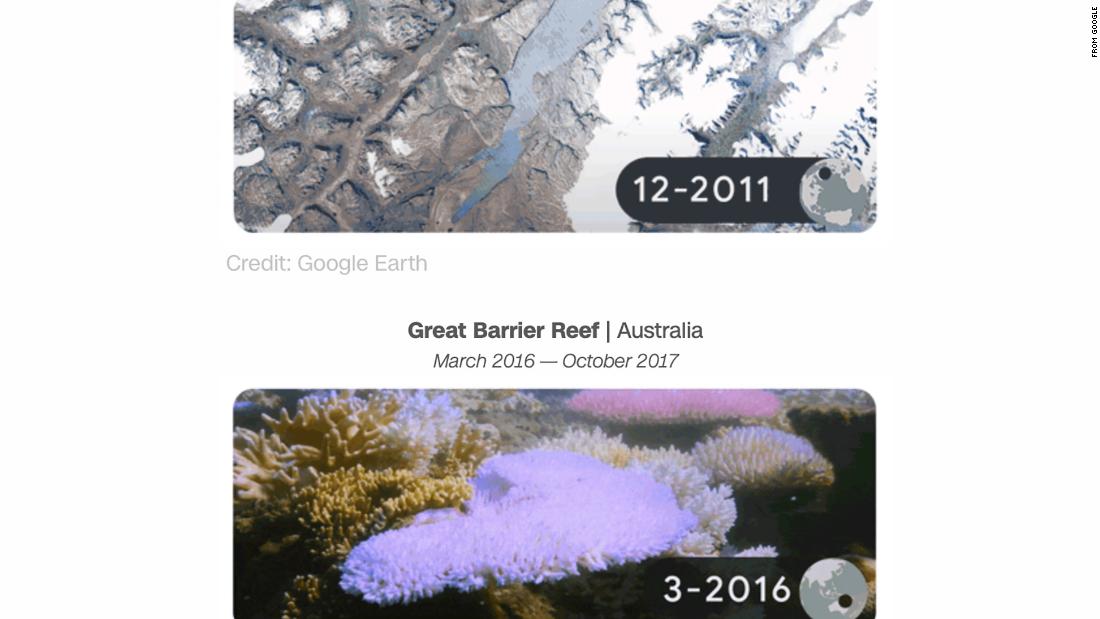
The images — four GIFs from four different parts of the world — will each remain on the homepage for several hours at a time throughout the day, Google said in a statement, in a bid to promote global awareness about environmental protection.
Users can see how a glacier at the summit of Mt. Kilimanjaro in Tanzania retreated between December 1986 and 2020, as well as glacial melt in Sermersooq, Greenland, between December 2000 and 2020.
Another image shows coral bleaching on Lizard Island in Australia from March 2016 to October 2017. A fourth shows forests destroyed by bark beetle infestation due to rising temperatures and severe drought in Elend, Germany between December 1995 and 2020.
Earth Day is an annual event held on April 22 to raise awareness for environmental protection. This year’s theme is “Invest In Our Planet,” and the new doodle is designed to intensify talks over one of the most pressing topics of our time, Google said.
The time lapses are in contrast with last year’s more optimistic doodle, which had a “Restore Our Earth” theme. At the time, Google published an animation of a tree being planted, which the company said was intended to show how “everyone can plant the seed to a brighter future” and “find one small act they can do to restore our Earth.”
Scientists have warned that the world must contain global warming to 1.5 degrees Celsius above pre-industrialization temperatures, to avert worsening and some irreversible impacts of the climate crisis.
The Intergovernmental Panel on Climate Change has released three reports since August, all sounding the alarm that time is running out to get the world on track for averting catastrophic impacts of the climate crisis. To do so, deep, sustained cuts must be made to greenhouse gas emissions, primarily through weaning off coal, oil and gas.
Heatwaves, droughts, wildfires and heavy rains that cause intense flooding are becoming more frequent in many parts of the world as it warms.